Last year’s stacked lineup of games for the Game Awards had us thinking: What was the best year in gaming? As part of our series on determining gaming’s best year, we’re putting together an article on each year, charting the major releases and developments of the year, and talking about both their impact and what made them great.

The Year: 2017
2017 was a weird year in the West, a sort of strange political funhouse in the waning days before the pandemic and everything that came after, and it was as much a transitional era in the gaming industries as it was everywhere else. The video game industry’s focus shift to mobile gaming continued, and indeed it’s around this year where it starts making sense to break out mobile games from “video games” as they’ve generally been understood in this series up until now, the same way arcade games were different from the home console games that would come after them: The highest-grossing video game of 2017, with $2.4 billion in gross receipts, was Tencent’s MOBA Honor of Kings (Arena of Valor internationally), primarily a release in mainland China; the more Western-recognizable League of Legends took second place with $2.1 billion. This is the beginning of the period of time where when forecasters and business analysts talk about the massive growth in the “video game industry,” they’re not talking about The Legend of Zelda or the new Ubisoft mega-open world title, and they’re not even talking about this year’s Call of Duty; they’re talking about mobile games that tens of millions of people who do not think of themselves as “gamers” play almost every day.
Although the backbone of the industry’s growth was (and remains to this day) hugely dependent on this silent mammoth driving investment over on mobile, 2017 was a headline year for video game releases — one of the biggest since [year of your preference goes here]. This was mostly due to a killer slate of single-player games, with new entries in the Legend of Zelda, Resident Evil, Mario and Nier franchises leading the way, but 2017 also featured the release of three multiplayer shooters that would define the live-service shooter game to the present day: Destiny 2 from Bungie Studios, PlayerUnknown’s Battlegrounds (PUBG) from PUBG Studios, and Fortnite Battle Royale from Epic Games. While it would be unfair to call it a quiet year for TTRPGs and board games, there were only a couple titles that ended up hugely distinguishing themselves. One, Torment: Tides of Numenora, was released simultaneously with a throwback CRPG video game that had been the real focus of the project on Kickstarter; the other, Gloomhaven, would find itself adapted to the video game format in short order.

The Nintendo Switch
The Wii was a huge success for Nintendo, but they’d already failed taking the next step once. After the tepid-at-best successes and missed opportunities of the WiiU platform, Nintendo went back to the labs again to try to make a family-friendly gaming device that could serve both the established Western 18-to-35 gaming market and the family audience, both domestic and foreign, that Nintendo viewed as their core demographic as a brand. They were most of the way there with the WiiU, to be honest: The tablet, the nunchucks, the approach to software on the Nintendo Store; everything’s there just waiting to be combined into the right form factor.
That form factor debuted March 3, 2017: the Nintendo Switch, a home console that was also a portable handheld, with a screen built into the tablet-sized device and two joypad controllers that attached to the side on rails. When docked and plugged into a TV screen, it could output at up to 1080p, while being locked into 720p as a handheld device; combined with its CPU and GPU specs, this made the Switch a relatively-underpowered device compared to its competitors in already the market, the PlayStation 4 and Xbox One. This really didn’t matter; Nintendo was confident in their plan for the Switch and they were correct to be. The new one-stop Nintendo gaming platform was an immediate hit, putting three titles in the top 10 best-selling premium games of the year (a Zelda entry, a Mario entry, and a Mario Kart entry, naturally) to go alongside the last ride of the Pokémon franchise on the 3DS, giving Nintendo nearly half the titles that placed.
TheChirurgeon: What Nintendo needed – and didn’t get with the Wii U – was the audience. That massive new audience they grew with the Wii just weren’t interested in a new console to replace the Wii. For the Switch, the answer was to cannibalize the company’s handheld audience – although Nintendo insisted the Switch wouldn’t replace the 3DS, that clearly wasn’t true and no one was buying it (Consider that, as of this writing, the Switch has moved fewer units than the Nintendo DS did, but a few more than the Wii U and 3DS combined). It was a solid strategy – Nintendo’s dominance of the handheld market has remained unchallenged even as mobile gaming has eroded that footprint a bit – and helped to carve out a more stable space for a third console in the market.
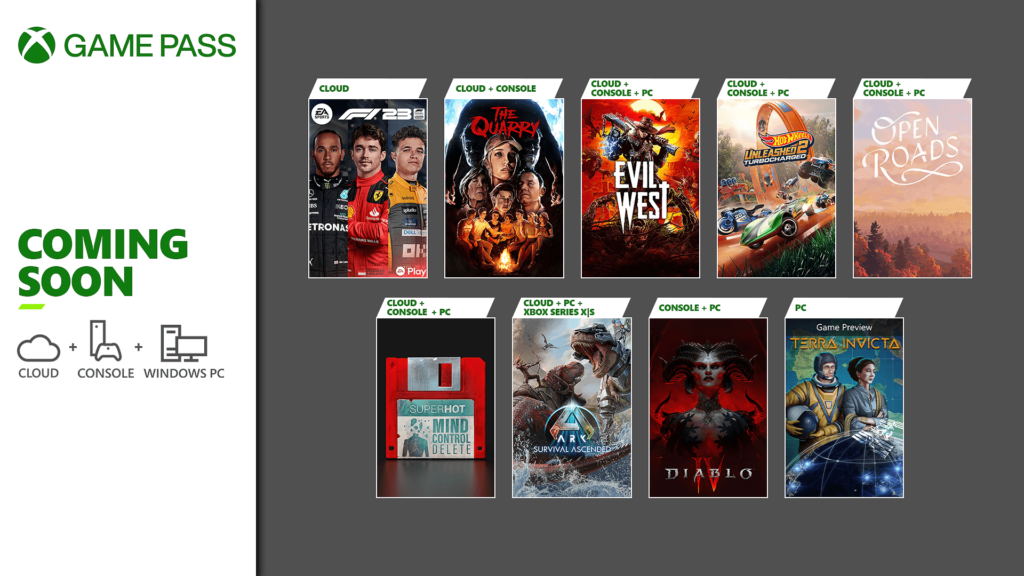
Microsoft Debuts Xbox Game Pass
TheChirurgeon: Microsoft rolled out its subscription-based model for games in June 2017, with more than one hundred games. The concept was simple: Pay $9.99 for unlimited access to a rotating collection of games for the Xbox One and Xbox 360. For gamers, this was a great deal compared to buying games at retail, and Microsoft would soon begin working on having new games debut with the program. It’s one of the best deals in gaming, and by the time of this writing Game Pass has grown to 34 million subscribers with Sony eventually being forced to release their own version of the service, PlayStation Plus.
The actual effects of Game Pass on the industry are interesting – while the service has been a tremendous success for Microsoft, how it affects game sales (and whether it cannibalizes them) has been a topic of interest since its release. Current statistics presented by Microsoft for the FTC hearings on the Activision acquisition seem to indicate that players on Game Pass play more games, spend more time playing them, and spend more on them generally, while also increasing microtransactions in those games. Either way, the Xbox Game Pass subscription has become the core of Microsoft’s games business and the primary reason to own an Xbox.

The Legend of Zelda: Breath of the Wild
Not the most revolutionary game to come out of 2017, but it had been awhile since the Zelda franchise had successfully reinvented itself — the franchise’s last mainstay entry, The Legend of Zelda: Skyward Sword, was released six years prior to mixed reviews at best regarding its bevy of Wii and Wii-mote related gimmicks, and other than well-regarded but niche handheld games on the 3DS (by 2017 firmly in its end-of-life stages) it had been over a decade since, well, Twilight Princess. As divisive as that entry grew to be, the series needed something that stole the scene again like Twilight Princess. By taking Zelda open world, they got it.
There’s stuff to quibble over here: weapon durability isn’t for everyone, though you’ll have people hang-gliding in like Link to defend it as absolutely crucial to the game’s intended loop. The true freedom of running around that was originally promised in Ocarina of Time’s Hyrule Field is realized here, but only after years of Ubisoft-likes numbing the market to the form, and you can play as much or as little of the game as you like with the caveat that if you’re gonna just run to Ganon and fight him (which you can do) you’d better be a streamer or speed-runner or something. The game was a massive success for the just-launching Nintendo Switch and took Game of the Year from a number of publications. Upon release, there was a dust-up over the Switch emulator yuzu being able to run the game flat-out better than the Nintendo Switch itself could; put a pin in that, it’ll come back in 2024.
TheChirugeon: I’m gonna toss in an extra comment here because I think Bernhardt’s underselling it – while Breath of the Wild has a few warts – mediocre dungeon/boss design and weapon durability being the big ones – the Hyrule it presents is fantastic. It feels great to explore and it’s chock full of awesome secrets and wonderful little environmental storytelling details. It’s a Zelda game which promises freedom and really delivers, and while it wasn’t the first open-world game, it perfectly captures the mood of being in a land a hundred years after everything collapsed.
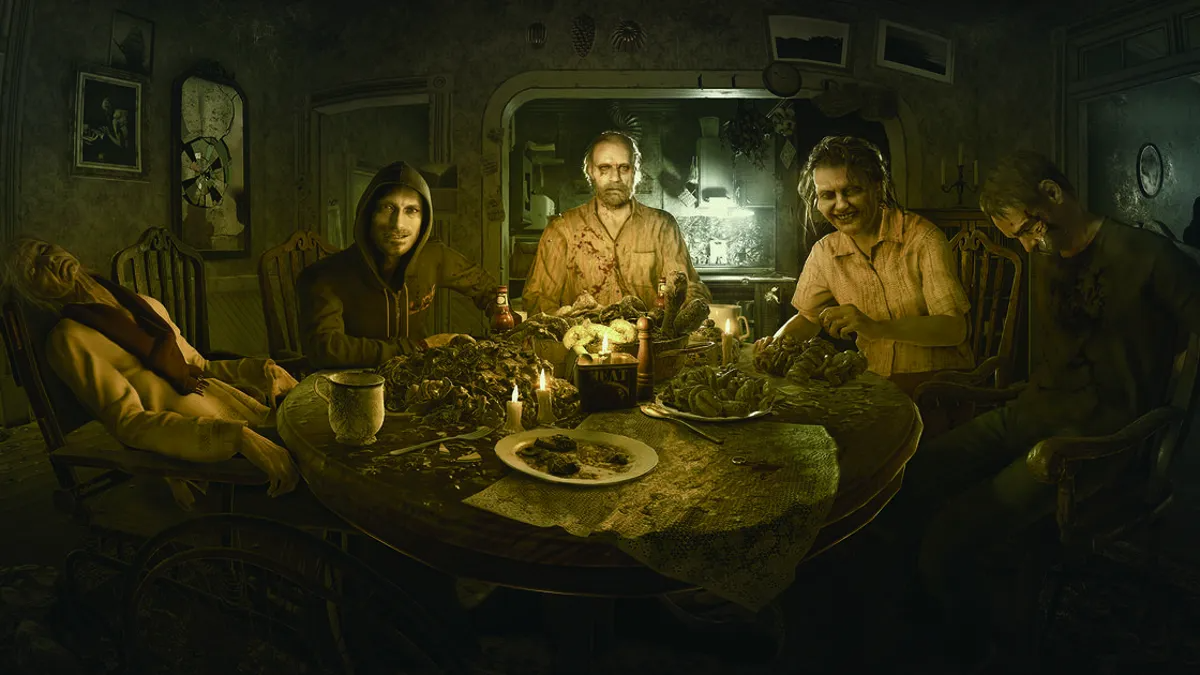
Resident Evil 7
Biohazard, better known on this side of the Pacific as Resident Evil, was another storied Japanese franchise that had gone through a bit of a funk in the 2010s, and unlike the Zelda franchise there were no peripheral or handheld titles saving its reputation from the woes of the flagship. Resident Evil 6 was the low watermark of two or three different tics the top-line RE titles had developed after the success of RE4; an overstuffed, incoherent mess of a game with far too much of a turn into action-heroics and away from action-horror, it was a great place to end that storyline, tie the whole thing up in a bundle, throw it into the river and start fresh. And boy, did they. Resident Evil 7 went all the way back to basics: You’re in a house. The house is old and full of the grotesque or just flat-out gross. Evil stalks the halls. Solve the puzzles, survive the bosses, and escape. Also, and this is important: This time it’s in first person.
With this one move Resident Evil 7 substantially upped the ante on a tired old formula. For quite some time that camera angle had been creeping up and up behind the protagonist’s shoulder, ever since the fourth installment permanently did away with tank controls and fixed iso cameras, but here Capcom finally made the move at the same time they took away all your QTE melee combos, your tac’d up assault weapons in mission two, and a lot of the mobility that the levels in RE5 and RE6 had leaned into, letting you kite zombies around while gathering ammo and other pick-ups. Part of the decision was due to buying into the hype on VR; the first wave of current-generation headsets hit in 2016 and a second wave of revisions would land in 2018. VR never really boomed the way its proponents wanted it to boom, but it was still an incredibly good aesthetic decision. The game was playable in VR from launch and remains one of the standouts on the PSVR platform.

The Rise of the Battle Royale: PUBG and Fortnite
The most important story in video games in 2017 has nothing to do with great single-player storytelling or Nintendo getting its groove back, however. The story of gaming in 2017, in terms of install base and pure where-the-money-is economics, is told in two multiplayer shooter trends. The first, the battle royale, will define the genre positively for at least the next decade. The second…well, we’ll get there.
PlayerUnknown’s Battlegrounds started out as a mod made by the eponymous PlayerUnknown, real name Brendan Greene, for Arma 2; by the time PUBG exited early access in December 2017, it had fully established itself as a standalone force in the multiplayer shooter scene, more or less single-handedly bringing the battle royale format to prominence in the space. The format was very simple if you’ve seen the movie Battle Royale: you’re all dropped onto an island and you have to kill each other until only one remains; the last person alive gets a chicken dinner. Arguably just as important as the premise itself was the innovation added to the game to stop the premise from just becoming a tedious game of hide and seek as everyone camped in their own farmhouse or water power: the Circle. After a certain amount of time, a big circle appears on the map; everyone outside the circle takes damage. The circle gets smaller and smaller as the game goes on until everyone’s stuck in the same 100 square meters of death somewhere in a forest or on a hill. Then instead of testing your camping or stealth like it has for the first twenty minutes or so of the run, the game becomes a test of being able to fight in space.
This mode of gameplay’s dominance doesn’t need to be overstated for those readers who play multiplayer shooters; they’re still living in this game’s shadow. Call of Duty changed their entire multiplayer model over to feature this game mode on an updating, yearly basis. The format won, and the game moved some 30 million units in 2017 — and while PUBG is no longer the biggest battle royale game in the world, it still does fairly well for itself.
But not as well as Fortnite. As PUBG was exploded in the first and second quarters of 2017, capitalizing on a trend that started picking up steam in the back half of the previous year, Epic Games’s everything-for-everybody free to play cartoony shooter aimed at “all ages,” but especially the tween, teen, and early 20s slice of the key demo, took keen notice. Much of the initial press leading up to the late July release of Fortnite: Save the World had focused on the survival and base-building aspects of their multiplayer shooter, but by September, it was the battle royale-like mode that had been spun out into a standalone product while Save the World continued trundling through Early Access, eventually hitting 1.0 in 2020. Fortnite Battle Royale still has the building mechanics from Save the World, but pared down and sped up to accommodate the constantly shrinking circle (here, “the Storm”).
Fortnite’s business success needs no real introduction; 10 million unique users had played within two weeks of launch, reaching some 45 million in Q1 of the next year. The game has become so culturally ubiquitous among a generation of motivated spenders in the key demographic that now the culture is coming to them, with all kinds of skins for sale of celebrities and characters from other recognizable brands for sale in Fortnite’s cash shop. Epic Games created an entire launch application and online store, the Epic Game Store, with Fortnite as its backbone and key business driver, and now refers to the title not as a game, but as a ‘platform.’ It was a pretty big success.
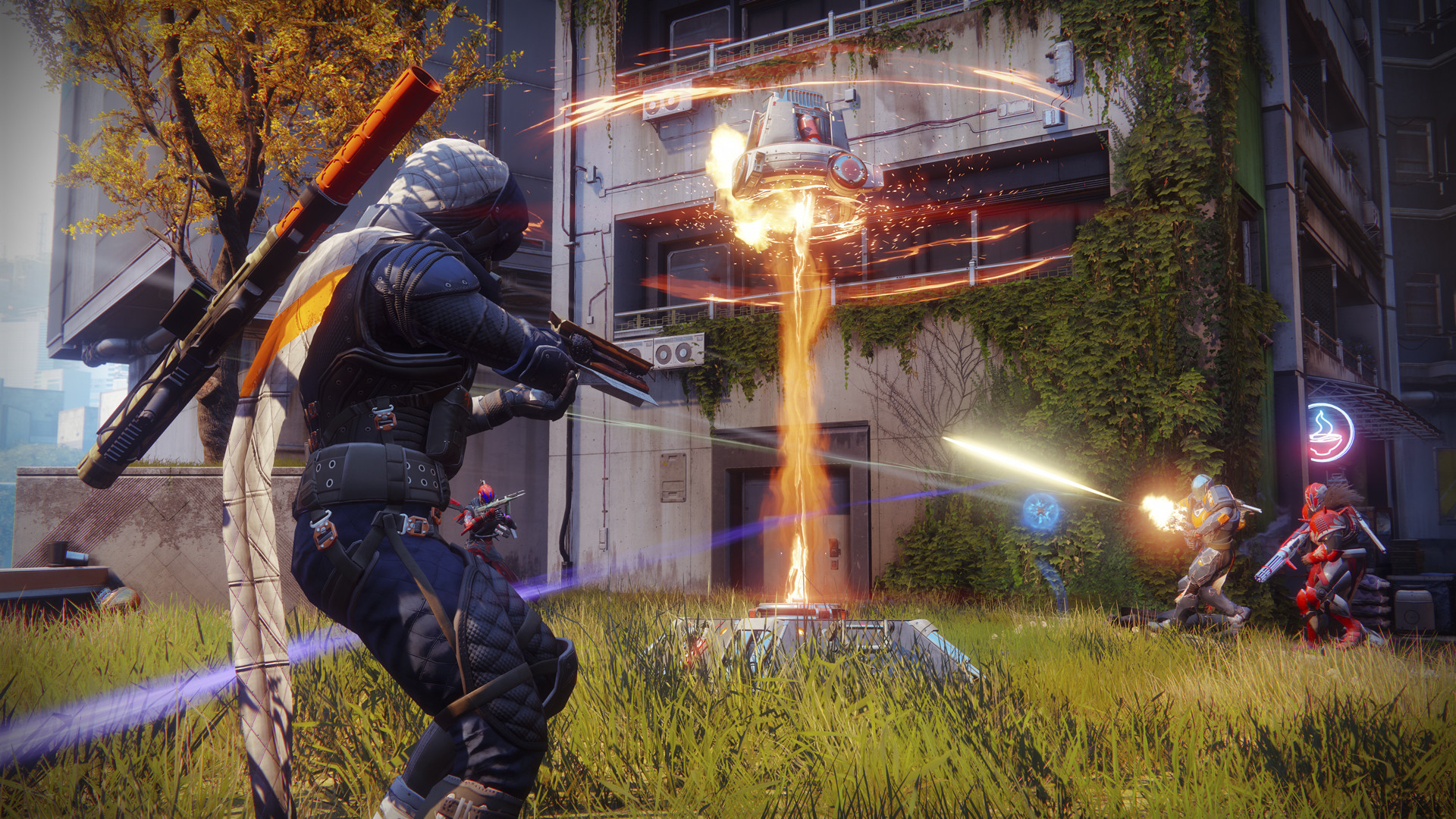
Destiny 2
Destiny 2 is emblematic of the second trend in multiplayer shooters, and it’s one with a much more mixed legacy. A game that charges full sticker price up front and for each expansion and nickels and dimes you on cosmetic stuff is a lot more like what executives thought the multiplayer shooter space was going to look like in five years before PUBG and Fortnite threw the battle royale spanner in the works. That’s a problem, though, because the sheer success of Destiny 2 out of the gate meant every other executive was going to chase it regardless of whether it made much long-term business sense. Where they saw a land rush, there was actually just a pie getting cut into smaller and smaller slices. Many of those titles, like Marvel’s Avengers and Anthem, have been shut down by now, but Destiny 2 got with the times, went free to play, and is still going strong. Or at least, in 2024, it’s still going. And that’s not nothing, looking around the market.
More a continuation than a sequel to the original, Destiny 2 represented the sleek, machined-to-perfection final-form skinner box that the original promised. All the lessons that Bungie learned about cosmetics, premium currencies, item level and raid design were put into action here, resulting in a fantastic way to lose five hours a day if you’re a college student (hopefully a bit fewer if you’re an adult with a job) in a game that felt…a bit less unique and a bit more empty than its predecessor. As more and more content was released (and more and more of it got sealed in the vault to keep the installation footprint for the game somewhere within reason), the bloom would come off the rose; but in 2017? Destiny 2 was the epitome of games-as-a-service.

Hollow Knight
TheChirurgeon: Released by Team Cherry in February 2017, Hollow Knight is one of the best Metroidvanias ever made. Also a Soulslike, the game is bursting with atmosphere and melancholy around every corner, and the game combines wonderful platforming with challenging combat, exploration, and storytelling to give us one of the most gripping and mysterious games of the decade. It’s a triumph on multiple levels, and good enough that we’re still lamenting the lack of a sequel seven years later – though all signs point to Silksong finally releasing in 2024.
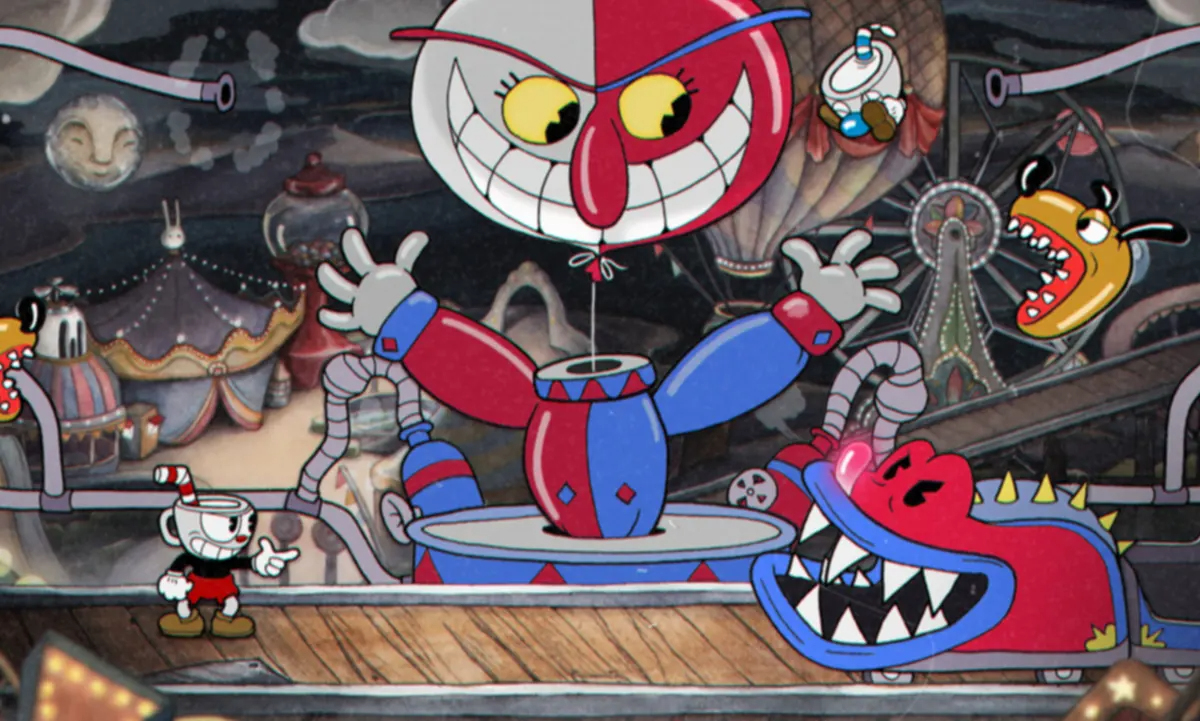
Cuphead
TheChirurgeon: Studio MDHR’s side-scrolling run-and-gun game is mostly known for its wonderful, Max Fleischer-inspired art style, which replicates the look of a cartoon from the 1940s. That’s definitely well deserved, but it’s also worth noting that the game itself is an inventive, challenging game with amazing boss fights and tons of replayability. Cuphead may draw you in with its beautiful, unmatched art style, but the game play is what keeps you playing, even after you’ve died on the same boss for the thirtieth time.

Super Mario Odyssey
TheChirurgeon: Nintendo’s other major tentpole game in 2017, Super Mario Odyssey wasn’t so much a demonstration of what the Switch could do as it was just a really solid Mario game. Its return to open-world exploration a la Super Mario 64 was a nice change of pace, and that combines with some innovative designs to make it the biggest, grandest Mario game in the series. It’s fun start-to-end, with a great mix of worlds, character, inspired throwbacks, and a bit more story than you usually see in a Mario game. It’s also got a wonderfully catchy theme song and it’s probably the best game in the 3D platforming genre.
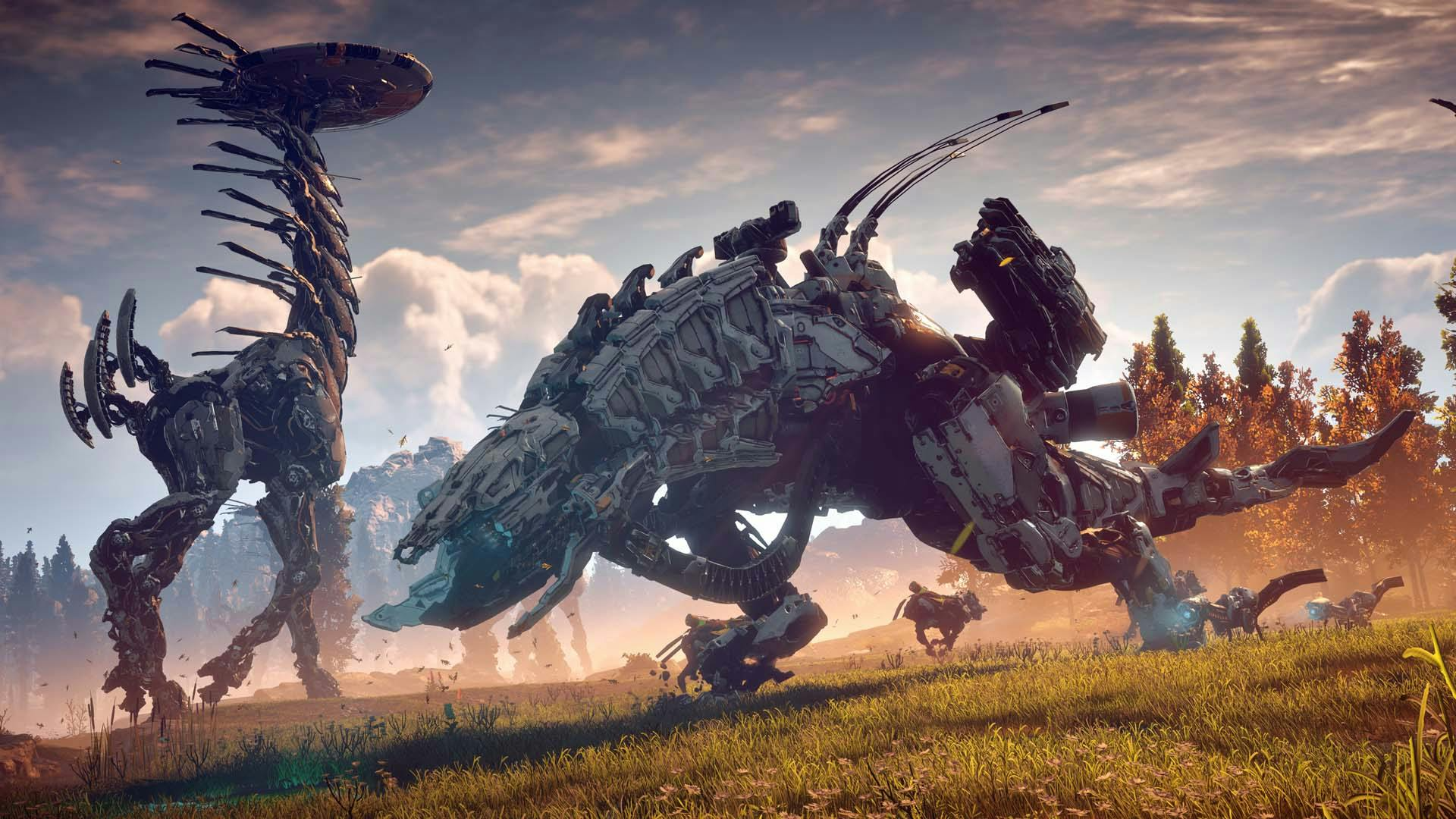
A Strong Year for Video Games
In addition to the titles above, 2017 also saw the release of:
- Nier Automata, a throwback JRPG that catapulted director Yoko Taro back into the limelight in the West and revitalized a franchise that hadn’t seen an entry since the original Nier in 2010.
- Horizon Zero Dawn, the first entry into Sony’s first-party open-world post-apocalyptic sci-fi survival franchise, which was perfectly fun and very well-written but had the misfortune of going head-to-head with Breath of the Wild on release.
- Prey, arguably the best “immersive sim” (System Shock 2-like) ever made, the last in a long line of immersive sims from Arkane Studios to get sent out to market to die by Bethesda with no real PR push.
- Total War: Warhammer II, which is arguably the peak of this franchise/quasi-trilogy, before the wheels started to come off.
- Divinity: Original Sin II, the game that got Larian Studios the Baldur’s Gate III contract and the proof of concept for The Larian Game in the same way that we talk about The FromSoftware Game or The BioWare Game.
- Assassin’s Creed Origins, which completely reimagined what an Assassin’s Creed game looks like to guide the franchise into a new era of gaming: rarity-color weapon drops and massive open world exploration. Despite being a genuinely good game, ACO suffered from being the fourth-best open world character action game of 2017 by a wide margin.
The First Person Killed by Police as a Result of Swatting
And finally, on December 28th, 2017, an ominous event: two morons playing Call of Duty: WWII in an online tournament got into a fight on Twitter about it, escalating into a swatting incident that would leave a completely unrelated man dead at the hands of a Wichita police officer who blew him away seconds after he stepped out onto his front porch, unarmed. This particular piece of nasty business put a spotlight first and foremost on the psychopathic behavior of various attention-seeking social media gadflies who prosecuted grudges by getting local police tactical teams involved via deceptive calls to emergency lines, and mostly elided the part where this only worked because these tactical teams were more often than not untrained, free-fire dangers to anyone in the community they came in contact with. This will get worse before it gets better.
A Massive Year on the Tabletop
TheChirurgeon: I’m tagging in to write about the tabletop side of things, and let me tell you – 2017 was one of the biggest. There are a host of all-timers here, from a new edition of Warhammer 40k which pulled Games Workshop back from the brink to some of the best board games ever made. There’s a ton to talk about here.

Warhammer 40,000 Eighth Edition
TheChirurgeon: In early 2018 Warhammer 40,000 had its own End Times event – GW revisited the Eye of Terror and Abaddon’s 13th Black Crusade, and this time? He won. The result was a three-book series titled Gathering Storm, in which Cadia was destroyed, the galaxy was ripped in two, a new Eldar god of death was born, and the Primarch Roboute Guilliman was revived and returned to the universe. All of this would culminate in the release of Warhammer 40,000 Eighth edition in June.
The story of eight edition saw the newly-returned Primarch would call for the creation of new space marines, the Primaris, and lead a crusade to reconquer the Imperium, and in the process facing off against Mortarion and the Death Guard. The game’s boxed set featured both a brand-new Death Guard army and a completely reworked Space Marines army, featuring larger, stronger marines called Primaris. The game featured a completely reworked rules set, discarding the older rules which had been heavily based on third edition in favor of newer, streamlined rules which discarded the book’s worth of named special rules. Movement characteristics came back, while armor values and psychic cards were removed. A new resource was added – Command Points – and Stratagems were introduced, special abilities players could spend CP on for an effect. The result was a much easier 40k to learn and play, with the game’s best rules to-date.
The Sixth and Seventh editions of Warhammer 40,000 had been a low point for the game, representing Games Workshop’s most cynical period, marked by bad rules and an emphasis on allies, summoning, and formations – rules which explicitly rewarded you for buying more models, often doubling up or buying kits you wouldn’t normally buy. While Games Workshop may not ever have been on the verge of going out of business, their financials had started to get pretty rough, and the game’s floundering opened the door for a number of competitors to gain ground – primarily Warmachine and X-Wing. Warhammer 40,000 Eighth edition blew these away, revitalizing the game in a big way. Eighth edition is when competitive 40k really came into its own and started to gain ground, and while some of the foundations of that were laid in seventh edition, eighth is really what made it possible.
But perhaps the biggest improvement/development of eighth edition was Games Workshop’s return to a digital strategy. Over the next three years, the company would move to releasing semi-annual errata and FAQs, updating rules and offering more support for competitive play. New rules intended to help game balance and changes to unit point costs suddenly made for a much more balanced game, where players weren’t necessarily saddled with a bad codex for an entire edition. the result was the most balanced edition yet, and those changes would lead to the game’s continued growth in ninth and tenth edition as competitive play has exploded.
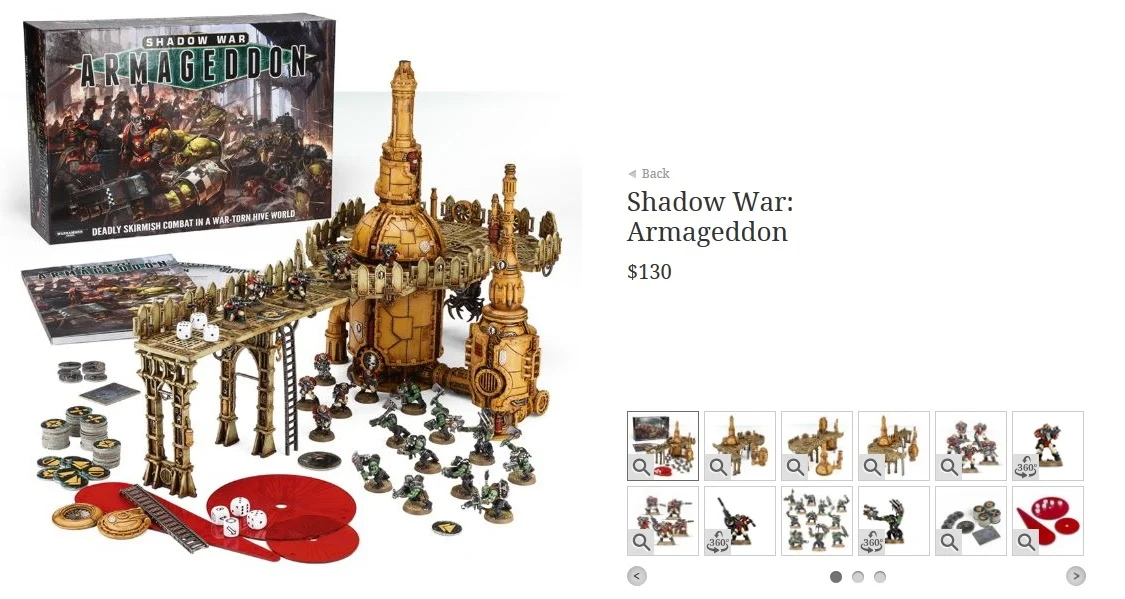
Shadow War: Armageddon
TheChirurgeon: Shortly before the launch of Warhammer 40,000 Eighth edition Games Workshop released a silly little one-off boxed game called Shadow War: Armageddon. Designed mostly to be a way to sell the then-new Sector Mechanicus terrain, Shadow War was a light update of the 1995 Necromunda rules ported to the broader Warhammer 40,000 side of things, replacing gangs with groups of covert operatives like Space Marine Scouts, Ork Kommandos, and Deathwatch marines. The game was a blast to play – a testament to the strength of those old Necromunda rules – and would end up with more support than Games Workshop expected, leading to some admittedly baffled takes when they launched a proper update of Kill Team one year later.
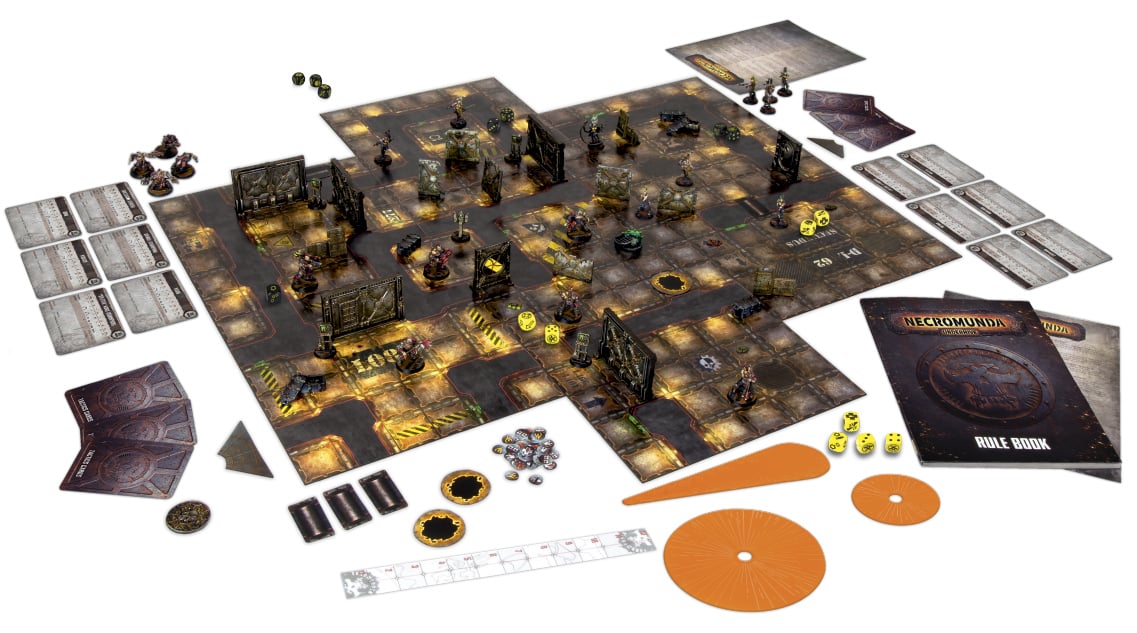
Necromunda Relaunches for the Modern Era
Fowler: The Shadow War: Armageddon experiment showed that the old Necromunda rules still had some bite, but it was time for a reboot. 2017 saw the release of the Necromunda: Underhive boxed set, alongside a brand new edition of the skirmish game favorite. Most 40k-related games follow the exploits of genetically-enhanced superwarriors and powerful aliens. Necromunda hands a bunch of guns to two sets of lowlifes and tells them to go play in the dank basement of a hive city. While the Underhive box contains everything you need to play a great game of Necro, the game has a frankly staggering amount of support. Successive releases have added a plethora of gangs, hangers-on, bounty hunters, campaigns, and even vehicle combat. 2022’s Ash Wastes boxed set moved the action outside of the hives, letting players smash together ramshackle vehicles.
While skirmish play is passable, Necromunda is best experienced via an arbitrated campaign. Taking a cue from Rogue Trader, an arbitrator functions much like a game master: choosing the parameters of campaign, setting a narrative, making sense of the mountain of rules, and generally keeping the players in line. Throughout a campaign gangers may gain experience, earn some cash, put on some heroics, or potentially die. The best moments of Necro are born of calamity – a stray shot knocking a rookie off of a gantry, an overcharged plasma pistol blowing up a smug leader, or a wrecked car rolling over an unsuspecting bystander. At time of writing, there are over a thousand pages of Necromunda rules. Making the subset of rules you choose to bring onboard is almost a game itself. It takes the right kind of group to make Necromunda work, but it is a fantastic and rewarding; and will give you an endless supply of absurd moments to laugh at.
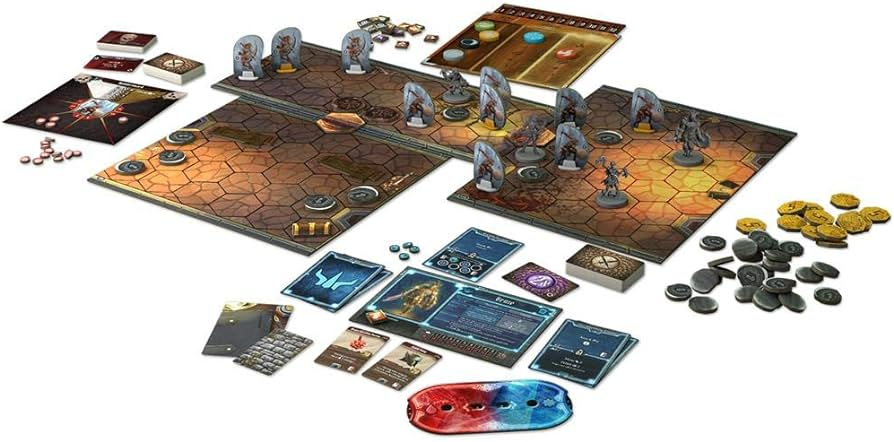
Gloomhaven
Marcy: Gloomhaven changed the face of board games forever. Board games had been circling the concept of deluxe, high production value products and experiences for a while, but nothing had quite gotten there like Gloomhaven did; Scythe, perhaps, is the only other contender here. But Gloomhaven introduced things that would shape the board game landscape for years to come after it, from what would become known as “legacy” components of the game state staying forever changed based on your gameplay, things to “open” and “unlock”, and variable player states that included the very real and exciting realm of playing a board game by yourself and having a good time. The game also weighs a metric ton and takes up a ton of space, also ushering in the era of “board games you don’t have anywhere to put”. But Gloomhaven’s real crowning achievement is that it manages to do just about everything it sets out to do, and does so amazingly well. Isaac Childres’ baby introduced, or re-introduced, numerous components that board games had struggled with in the growing complexity of competition between video games and tabletop rpgs, bringing a structured campaign that changed based on player choices, “unlockable” secret characters and content, and a cohesive narrative that encouraged players to keep going until they had reached the end of their story, which could then be told again from the beginning.
Gloomhaven had two successful Kickstarters, one in 2015 and one in 2017, and frankly the entire board game industry would have been better off if that was the end of board game crowdfunding, but that maybe is a different topic. Gloomhaven’s biggest success was that the Kickstarter did what it said on the box, and when the buzz of the game finally spread to a wider retail release, players who had only heard of how amazing Gloomhaven is found the exact same game and all of the same content available to them to purchase. Although there are two sequels to Gloomhaven–a smaller box game sold in stores like Target, and Frosthaven, the direct ‘big’ sequel–Gloomhaven itself still stays at the top of top board game of all time lists, and will likely stay somewhere in the top ten forever; there really is nothing else like it, and games that have tried to ride the wave of Gloomhaven’s success have never quite taken off on their own right; in fact, Frosthaven trails behind the original by quite a large gap, with many players simply preferring to keep playing the original, the sign of a truly iconic game.

Spirit Island
Chucat: There are a surprising number of boardgames where you play as colonists, or exploiters taking advantage of unspoiled lands and the indigenous people there in order to further your own goals. The unpleasant side of them tends to be abstracted just a bit so no awkward questions really have to be asked (Puerto Rico is a good example here). Thankfully, someone who is actually good at game design thought this exact same thing, and used it as inspiration to create Spirit Island, which flips it all around; you’re the one playing as the unspoiled land, the inhabitants of the land, and the increasingly angry and powerful gods that live there.
Apart from a few minor issues, Spirit Island was of my favorite games of 2018-9. The combination of theme, the fact it’s a co-operative game, and the growing sense of progression as you play all add up to make something really fun. If you’re into co-operative games and you’re sick of Pandemic, I can’t recommend this enough.
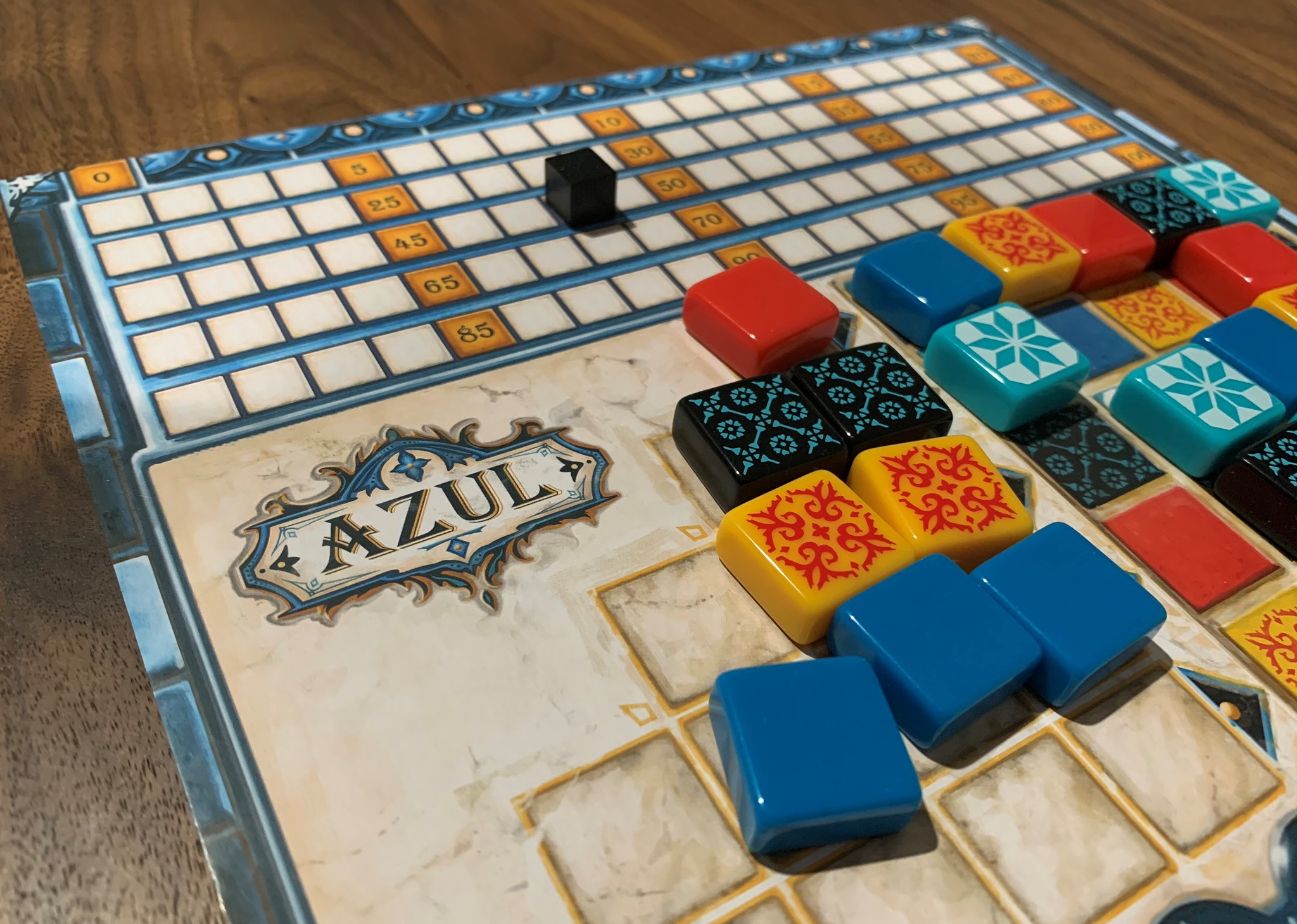
Azul
Raf Cordero: The game which won our Spiel des Jahres March Madness competition is Azul, a game we like enough around here to have given it a full on Turn Order review. Published by Plan B games, Azul is designed by Michael Kiesling who is no stranger to the Spiel award. He’s a multiple time nominee and award winner.
Like many of the best Spiel winners, Azul seems simple. You’ll pick some beautiful plastic tiles out of the center of the table in a pseudo-draft format and place them on your mosaic grid. There are rules for selection and rules for placement, but they’re easy to understand once you start moving pieces around. What makes this game shine and gave it a 1-seed in our bracket is in the accessibility-to-depth ratio.
It doesn’t matter how many board games you have or haven’t played, you can play and enjoy Azul in minutes. The construction of a mosaic means that win or lose you have something to admire, and the various scoring bonuses give you regular hits of dopamine regardless of how well you’re doing. Once you’ve got the hang of it, you’ll find a game that rewards long term thinking and can get downright mean in the draft phase. Azul has spawned some sequels, including a stained glass game we also reviewed, and is a modern classic that should be in print for a good long time.
Why It Was the Best Year in Gaming
TheChirurgeon: 2017 wasn’t a year we expected to be so strong in this competition but as we started writing out it we just kept coming across new games we had to add into the write-up. From groundbreaking board games like Azul and Gloomhaven to new editions that completely revitalized our favorite games like Necromunda and 8th edition Warhammer 40k to amazing video games like Hollow Knight, Breath of the Wild, and Resident Evil VII, there were plenty of amazing releases to talk about. And when we started thinking about how important a year it was, those metrics also made a compelling case: The debut of Nintendo’s Switch, Microsoft’s Game Pass, and the rise of battle royale games PUBG and Fortnite made it an important year to cover as well. 2017 is a year I think few people will initially think of as a strong year in gaming but once they see the list they’ll change their minds.
This article is part of a larger series on the best year in gaming. For more years, click this link. Have any questions or feedback? Drop us a note in the comments below or email us at contact@goonhammer.com.
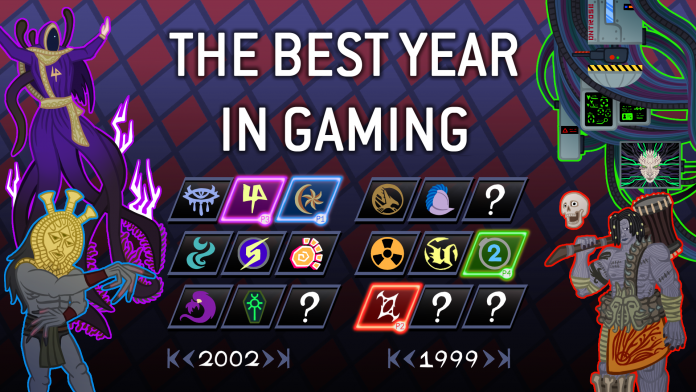


You must be logged in to post a comment.